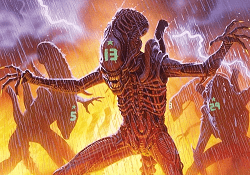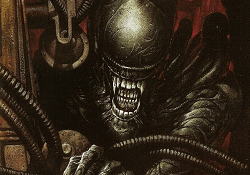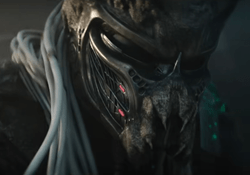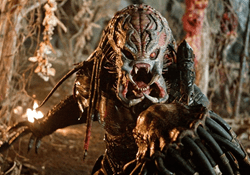Yautja Anatomy: Exploring The Biology Of Predators
The Yautja are extraterrestrial creatures with their own unique anatomy and biology, although there are some similarities to humans. Here is an overview of Yautja anatomy, including its blood, bones, dreadlocks, mandibles and skin. Find out how many fingers and toes the Predators have, what their dreadlocks consist of, whether their blood can neutralize Xenomorph acid and speculation of and how long do the Yautja live.
The Meaning of "Yautja"

The term "Yautja" is often used as a synonym for the Predator species, but can be confusing to newcomers to the series. The term was first invented in the Aliens vs. Predator: Prey novel written by S. D. Perry and Steve Perry, a book based on the first Aliens vs. Predator comic series. "Yautja" is the term that the Predators refer to themselves. Although the novel followed the comic's events closely, it added a lot of exposition on top of that, including interesting depictions of the Predator race and culture. "Yautja" was later adopted to be used in most of the Predator books and many Predator wikis, although it usually does not appear in the Predator games or comics. Prey, the latest Predator movie, shares the title with this book, but like all the other Predator movies, does not use the term "Yautja".

Predator Blood

The Predator blood is a bright green bioluminescent fluid. In comparison to Xenomorph blood which is acidic, Yautja blood is said to be alkaline and even neutralize some of the effects of the Alien acid which can come into contact with the Predators during combat. The Predators can lose a lot of blood and still continue functioning. The Yautja blood is warm and non-toxic like human blood and some sources have indicated it contains healing powers if utilized as a serum for humans. The Predator blood is glowing green because behind the scenes, glow sticks with K-Y Jelly lubricant were used for the effect.
Predator Skull and Bones

The Predator bones are bigger and sturdier than human bones. They also seem to be white in color as seen by the skull in the Predators movie. Even with their tougher bones, the Predators are still often dismembered and even decapitated, so they still fall victim to sharp blades. The bones can heal well, for example when an Engineer broke the arm of Ahab, it appeared to have healed in a few days. The Predators like to keep the bones and especially skulls of their victims, even if they have been members of their own race.

Predator Skin

The color of the skin of the Yautja depends on the type of the Predator and other factors. The most well-known Predator - the Jungle Hunter had brownish skin. There is also a white-skinned Predator - the Alpha Predator recently seen in Predator: Hunting Grounds. Most likely, the skin is also thicker than human skin, and aids in absorbing damage from melee weapons and bullets. The arms and chest are also covered in small spike-like appendances, smaller versions of the dreadlocks. Besides armor and the fishnets, the Predators don't wear clothes on their skin and prefer to hunt in warm climates.
Yautja Eyes And Vision

Most commonly, the Yautja have yellow or green eyes, with a black pupil in the middle. The regular vision of the Predators is somewhat blurry and distorted with a reddish tint, but their bio-masks compensate for that, providing an array of vision modes suited for different situations and environments. However, some Predators, including the City Hunter and Assassin Predator, seem to view in thermal vision, even without their bio-masks. This can be explained by these Yautja having enhanced or upgraded eyesight. The Assassin Predator could even see a tactical display with an English-to-Yautja translator in his augmented vision.
Predator Dreadlocks

The Predators are well-known for their long dreadlocks, which serve as the Yautja version of hair. Like human hair, they can be styled and decorated. However, some sources indicate that Yautja dreadlocks actually have blood flowing inside them, so they would be difficult to cut. Some Predators have had their dreadlocks removed, albeit against their will. For example, the captured Stone Heart Predator had all his dreadlocks removed as part of a brainwashing program to turn him against his brethren. Like in humans, the dreadlocks grow with age and turn to a grey or white color in the case of Elder or Ancient Predators. One of the Predators with the longest known dreadlocks in the Shaman Predator, part of the Lost Tribe of Predators.
Predator Mandibles

The Predator Mandibles are another iconic feature of the Yautja. These crab-claw like appendances make a clicking sound that can intimidate their prey, and are part of the complex language of the Yautja. The tusks can be broken, and don't grow back, as seen in the case of Greyback from Predator 2. The tusks can also be used as a last resort defensive weapon - the Assassin Predator bit off the head of a Stargazer soldier using his mandibles. In a neutral state like when wearing a mask, the mandibles are kept in a closed position.
Predator Tongue

The Predator does have a tongue but it is often difficult to see. It is a forked tongue, similar to a viper, and is located just behind the four lower teeth of the Yautja, sticking out of its throat. The tongue is most visible in Predator 2 just before the City Hunter injects himself with a painkiller from his medicomp. Other Predator movies have either ignored this detail or are depicting a different Yautja subspecies with their own anatomy. The Yautja tongue most likely helps the Predator to eat and along with the mandibles, enables the Predator to communicate.
Yautja Ears And Hearing

The Yautja have excellent hearing and they do have ears, which are hidden behind their dreadlocks. The Predator hearing is further enhanced by their bio-masks. The ears are best seen on the sculpted head of the Fugitive Predator, created by StudioADI. The ears are small oval orifices on both sides of the head, just under the holes for the dreadlocks. Unlike humans, the Yautja ears don't protrude outside of the body. It is unclear if the ears help with the balancing of the Yautja as well, or if that is one of the functions of the dreadlocks.
Yautja Smell

The Predators have no noses but they do have a strong sense of smell, which can be compared to some insects or crabs living on Earth. According to Aliens vs. Predator: Prey, the Yautja can sense to smell another being's "musk", which is a substance emitted by their emotions, similar to pheromones. However, Predators had trouble smelling this on humans, as Dachande did not detect the aggressive emotions of Machiko Noguchi, a human female. The Yautja's smell is said to be oily and bitter, especially when in an agitated state. On the other hand, the Predator's blood has a sweet smell.
Predator Claws

The Predators have five fingers on each of their clawed hands, including a thumb. They have long black nails that could be used in defense, however they prefer to use their wristblades instead. Some Predators have known to wield more than two hands. For example the Four-Armed Predator from the Predators sequel comic was possibly a genetic mutant. The Yautja prefer to not wear gloves, even in cold Antarctic temperatures.
Predator Feet

The Predators have five toes on their feet. However the fifth toe is on the side of the foot and often difficult to see, and Predators are mistakenly thought to have only four toes. Like their fingers, the toes are covered with sharp nails. The Predators prefer to hunt either bare footed or wear sandal-like foot-wear. Their feet are large and the Yautja would make great swimmers. Perhaps there is a connection to their reptilic past in the swamps of Yautja Prime.
Predator Internal Organs

It can be assumed that the Predator's internal organs mirror the basic human ones. A rare glimpse into the internals of a Yautja happened in Aliens vs. Predator 2: Primal Hunt expansion where we see a POV of a Predalien chestburster chewing its way out of a Predator's chest. The chestburster ripped through the lungs, ribcage, and flesh of an Ancient Predator, killing him instantly. Some sources state that the Predator has multiple hearts (four or five), and this is one of the reasons it is able to sustain so much damage. It has also been said that eating the Predator's heart will give an unnaturally long life to a human. The Predator subspecies called Hish-Qu-Ten also have an exotic organ named the Kill Gland that produces hormones that make the Predator go into a crazed frenzy.
Predator Reproductive Organs

The main species of Yautja are not asexual and have distinct reproductive organs belonging to their genders. However, the Hish-Qu-Ten subspecies are asexual and can randomly change their genders, which can happen at inappropriate times, including in battle. For the regular Yautja, reproduction is similar to humans, with male and female mating, although the act can be more aggressive than for our own species. The females have an orifice between their legs that serves as a channel for childbirth. On the other hand, the males most likely have gonads and a phallic reproductive organ, which has never been seen in the lore. Both males and females protect their crotch area with armor, pointing at its importance and vulnerability. Furthermore, female Yautja have breasts and nipples, which are lacking in males.
Predator Lungs And Breathing

The Predators have lungs and can breathe in Earth's atmosphere, but not indefinitely. The bio-masks help the Predators to breathe in hostile environments, including space and underwater. Some sources say that the natural mixture of gases the Predators need to breathe has higher nitrogen and methane than Earth's atmosphere. The City Hunter was seen to have breathing difficulty after losing his primary bio-mask and had to resort to using a secondary breathing mask. However, he was wounded in the chest and perhaps the polluted air of LA was having an effect as well. The Upgrade Predator spent his whole time on Earth without a mask, but both his eyes and lungs were most likely enhanced to allow this feat.
Yautja Digestion And Eating Habits

The Yautja are carnivorous creatures that mostly eat meat, often devouring it raw while on their hunts. As mentioned in Predator 2 by Peter Keyes, they have a taste for beef but have also been seen eating muskrats, wild boars, sheep, and goats. The eating itself is a messy process that involves their mandibles, with blood being splattered and big chunks of meat being swallowed whole. The Predator's digestive system must handle raw meat and bigger pieces well, converting it into energy needed for their impressive body strength. Some older Yautja have also been seen to take a more conservative approach, chewing on roots, cooking stews, or even preparing ceremonial dinners on Yautja Prime. There is some evidence of Yautja cannibalism and eating humans, but there are more cases of humans eating Yautja meat, in the hopes of lengthening their lives.
Predator Height and Weight

The Predator height is about 2 to 3 meters, depending on the individual Yautja and its type. One of the shortest notable Yautja was Shorty from the Aliens vs. Predator: War comic book, who was about 2 meters tall. The tallest Yautja types like the Upgrade, Infected and Gladiator can be even slightly above 3 meters tall. The Predator's weight is a bit more difficult to say, but roughly they should weigh about two to three times the weight of a human. So an average Predator like the Jungle Hunter weighed about 250kg which is more than twice the weight of Dutch. All this mass gives them a big strength advantage in unarmed combat.
Yautja Strength

The Predators have been shown to be incredibly strong in both the movies and the expanded universe. Lifting a 100kg human with one hand has been easy for an adult Yautja, as has been lifting a human and a Xenomorph with both hands. The Feral Predator raised a defeated grizzly bear above his head, an animal with an average weight of about 250kg, or 550 pounds. Their lightning-fast reflexes and big muscles allow the Predators to rip the spines off humans and punch through concrete walls or steel doors. Finally, with their extraordinarily strong leg muscles, the Predators can jump much higher than humans, allowing them to leap from tree to tree in the jungle. Their jump height has been about 5-10 meters, or 15-30 feet, which is measurable in the Predator games.
Losing Limbs

As mentioned previously, the Yautja often lose a limb in combat and continue to fight on. They are able to cauterize their wounds using the medicomp - a blueish goo is applied to the wound that stops the bleeding. There are some cases of Predators using prosthetics or robotic limbs, for example, the Bionic Predator replaced his right arm and left leg with bionic ones. Furthermore, a Predator named Yaquita used a wheelchair-like apparatus in the Rage War trilogy after losing her legs in combat. Some Predator books and comics have hinted that the Predators have the ability to regenerate their limbs, but there are no good examples of any Yautja doing this.
Predator Age, Lifespan and Mortality

The Yautja can live at least several centuries and some have known to live several millennia. However, often they don't live through their hunts and die in combat, as no Predator has yet to survive the events of a Predator movie. Similarly to humans, their dreadlocks turn grey and skin gets wrinkled. Also, experienced Predators often have a lot of scars and might be missing an eye, tusk, or a limb. With age, their strength and reflexes can wither, but their minds remain sharp and the experience gives them a good edge over their opponents. One of the oldest known Yautja is the Ancient Predator from Predator: Homeworld, who dispatched three young bad blood Yautja in single combat. However, the Predators are not immortal and several individuals have died of diseases related to old age.
Yautja Brains And Intelligence

The Yautja brain is obviously located inside their heads and is about the size of a human's. When fighting the Predators, it is a good strategy to shoot them in the head, especially when they are not wearing a bio-mask. Yautja intelligence is also about the same (or slightly less) as a human, although the Predators have one big advantage. As their lifespan is hundreds of years long, they gather much more life experience and knowledge during their long lifetime. The most intelligent Yautja are the Elder Predators, who have survived countless hunts and are passing on their knowledge to younger Predators. Younger Predators are driven by their emotions and can be very aggressive, often getting them killed on their first hunts.
Yautja Healing Factor

The Yautja possess a remarkable regenerative ability, enabling them to heal from injuries rapidly and persist in their pursuit. This extraordinary resilience is attributed to their sophisticated anatomy, featuring redundant organ systems and a highly efficient blood circulation. Moreover, Yautja are endowed with a significantly high tolerance for pain, allowing them to withstand severe harm without succumbing to the incapacitating pain that humans would experience. It's not uncommon for these Predators to sustain the loss of limbs yet maintain their combative efforts, addressing blood loss subsequently. Nonetheless, this healing factor might be temporary, akin to an adrenaline-like substance. Post-combat, they still require medical attention to ensure survival, else their hunt could be fatal.
Rest And Sleep

Just like humans, Yautja physiology requires sleep to recover from the rigors of battle and to facilitate the healing of injuries. Although Predators are not explicitly shown sleeping in the movies, the Jungle Hunter in the first Predator film is seen resting against a tree trunk while tending to his leg wound. In the Predator: Big Game comic, a deranged Yautja is depicted sleeping in its "nest," surrounded by numerous trophies taken from humans in the New Mexico desert. Meanwhile, Predator sleeping quarters are illustrated in Aliens vs. Predator: War, though these may have been adapted for the human-aligned Predator, Machiko Noguchi. Additionally, Yautja physiology appears capable of long-term stasis, as evidenced by the use of hypersleep capsules in Predator: Deadliest of the Species, where Big Mama Predator is shown utilizing this advanced Yautja technology.
Predator Tail
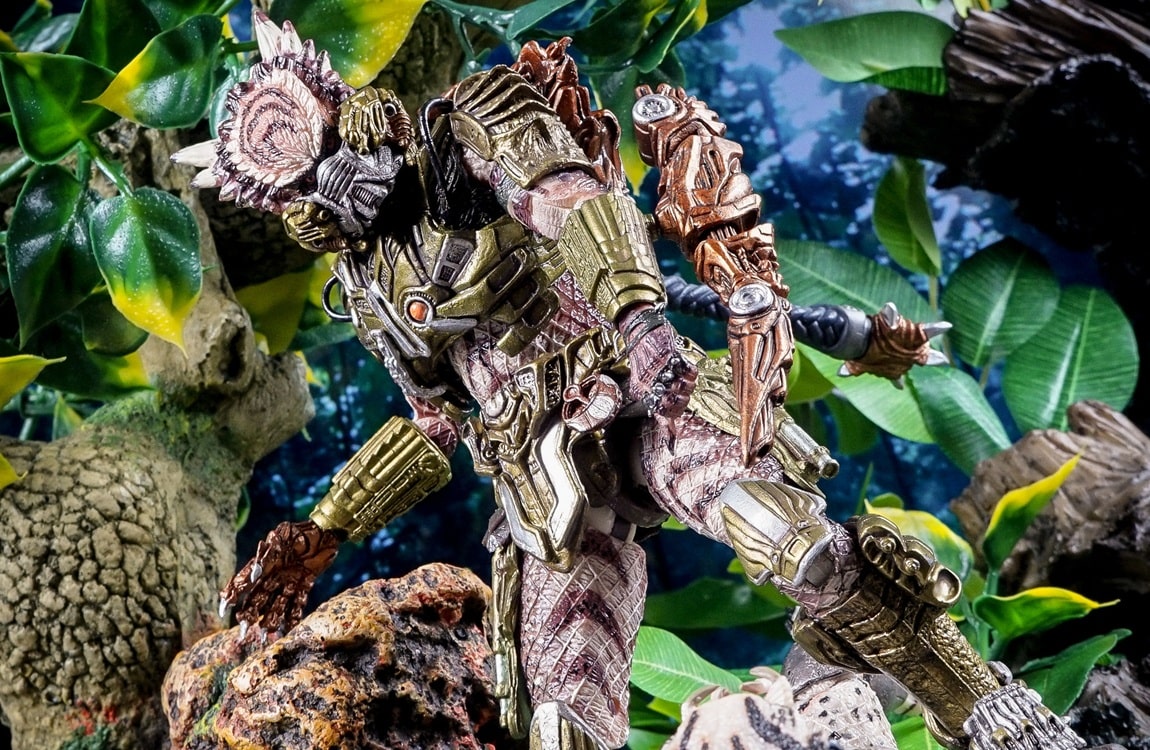
The Yautja don't have tails, including all their subspecies and even hybrids. The Predalien does have a tail, but it is a Xenomorph trait that is present in all Aliens, including the ones born from Predators. The Spiked Tail Predator (a figure released by both Kenner and NECA) seemingly had a tail as well, but it is actually made of abnormally long dreadlocks that were braided together. At the end of this "tail" was a spiked mace-like ball, which was possibly used as a weapon. Spiked Tail was part of the Rogue Space tribe, whose members were known to conduct illegal experimentation, which got them banished from Yautja Prime for such acts.
Predators Having Human DNA

Some Predators have traces of human DNA, but this is limited to only certain Yautja clans that experiment with hybridization which is normally against the Predator honor code. For example, the Fugitive Predator and Assassin Predator had upgraded themselves with other species' DNA, including humans. While the Fugitive Predator had seemingly no clear benefits of this, the Assassin Predator had a bigger size, armored skin, enhanced eyes, and could easily breathe in Earth's atmosphere without a mask. The large Predator wanted to further enhance his lackluster intelligence with the help of the DNA of a human child suffering from Asperger syndrome, which ultimately failed. So far, almost all Yautja hybrids have been ruthlessly hunted down and killed.
Basis On A Real Life Animal

The Predators are not based on any specific Earth animal, but they share some characteristics with the Chameleon, a jungle lizard living in the African jungles. In addition to having lizard-like skin, the Yautja can blend into the jungle just like the Chameleon. Although the Yautja's cloak is not biological, it was part of the Predator's skin in the initial design phases of the movie. Furthermore, the Yautja's predatory behavior and roar make it similar to the lion, another ferocious hunter. Finally, the Predator's facial features, namely the mandibles, are similar to the anatomy of several crab species, earning its nickname - crab face.
Conclusion
In conclusion, the Yautja are fascinating extraterrestrial creatures with their own unique anatomy and biology. While there are some similarities to humans, such as having blood and bones, the Yautja have many distinctive features, including their green bioluminescent blood, sturdy bones, and thick skin. Their long dreadlocks, mandibles, and claws are also iconic features that set them apart. The Yautja's biology enables them to survive in combat situations and heal quickly from injuries. While much is still unknown about the biology and lifespan of the Yautja, the information that has been gathered sheds light on the incredible adaptability and resilience of these fascinating creatures.
Tag Categories: Yautja Appearance

